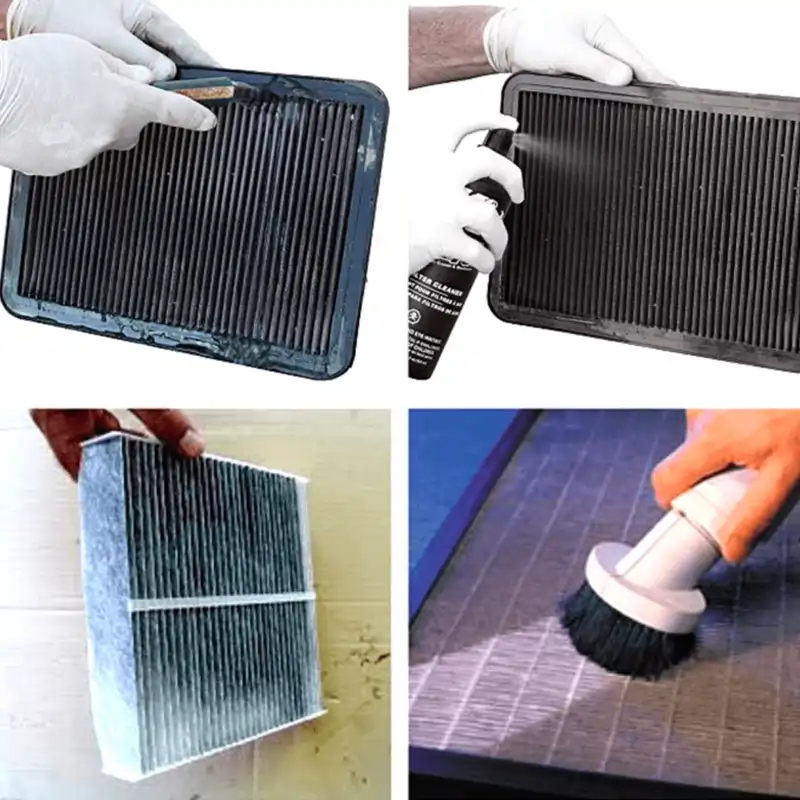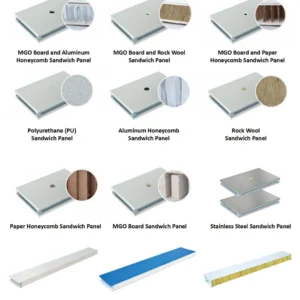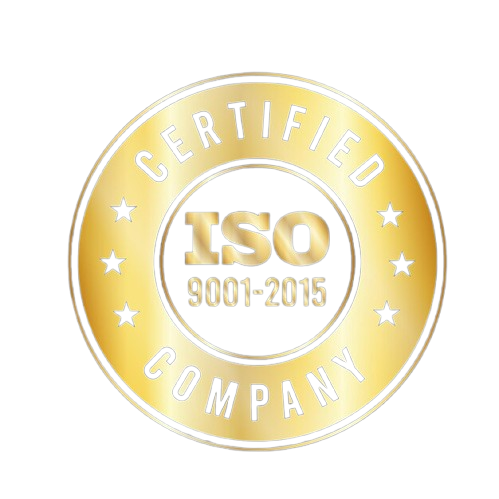When it comes to maintaining the air quality in your home or workplace, a High Efficiency Particulate Air (HEPA) filter can be a game-changer.
HEPA filters are renowned for their ability to trap tiny particles, such as dust, pollen, pet dander, and even some bacteria and viruses. However, to ensure your HEPA filter continues to perform at its best, regular cleaning is essential.
In this comprehensive guide, we’ll walk you through the step-by-step process of how to clean HEPA filter effectively, prolonging its lifespan and ensuring cleaner, healthier air for you and your loved ones.
Importance of Clean HEPA Filter
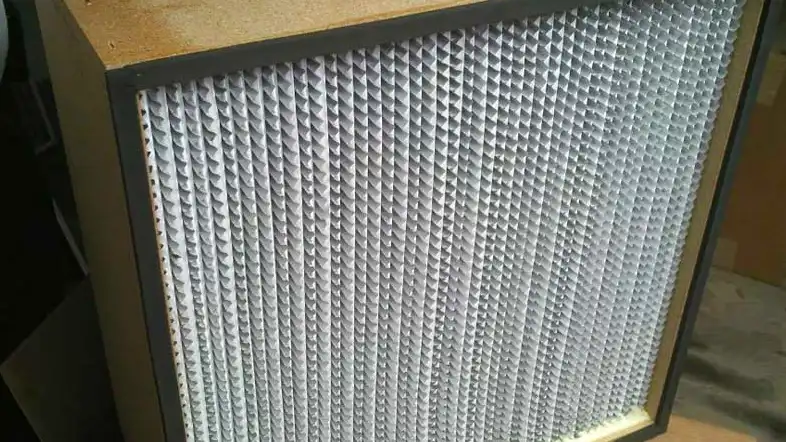
A clean HEPA (High-Efficiency Particulate Air) filter is of utmost importance, and its significance cannot be overstated when it comes to maintaining the air quality in your living space or workplace.
Let’s delve into why a clean HEPA filter is so crucial:
Effective Particle Removal:
The primary purpose of a HEPA filter is to capture and trap tiny particles suspended in the air. These particles can range from common household dust and pollen to more harmful contaminants like pet dander, mold spores, and even certain bacteria and viruses. A clean HEPA filter can efficiently capture and contain these particles, preventing them from circulating back into the air you breathe.
Improved Indoor Air Quality:
Indoor air quality is a significant factor in your overall health and well-being. With a clean HEPA filter in place, you can significantly reduce the levels of airborne allergens and pollutants. This leads to fresher, cleaner air that is easier on your respiratory system and can alleviate allergies, asthma, and other respiratory issues.
Enhanced HVAC System Efficiency:
If you have a HEPA filter installed in your HVAC (Heating, Ventilation, and Air Conditioning) system, keeping it clean can lead to improved system efficiency. A clogged or dirty filter forces your HVAC system to work harder to circulate air, leading to increased energy consumption and higher utility bills. By regularly cleaning the HEPA filter, you can help your HVAC system operate at its peak performance, saving both energy and money.
Extended Filter Lifespan:
HEPA filters can be a bit more expensive than standard air filters, but they are also more durable and effective. Regular cleaning and maintenance can extend the lifespan of your HEPA filter, reducing the frequency of replacements. This not only saves you money in the long run but also reduces waste and the environmental impact of disposable filters.
Prevention of Unpleasant Odors:
Particles trapped in a dirty HEPA filter can sometimes lead to unpleasant odors in your home. By keeping the filter clean, you can prevent these odors from developing and maintain a fresh-smelling indoor environment.
Protection of Your HVAC System:
A clean HEPA filter also protects your HVAC system itself. When particles accumulate on the filter, they can potentially enter the HVAC unit, leading to clogs, reduced efficiency, and even damage. Regular cleaning ensures that these particles are captured and removed from the system, preserving its longevity.
A clean HEPA filter is not just an optional maintenance task; it’s a fundamental aspect of creating a healthy and comfortable indoor environment. By regularly cleaning your HEPA filter, you can enjoy better air quality, lower energy bills, and a longer lifespan for both your filter and your HVAC system.
How to Clean HEPA Filter Step by Step
Before you embark on cleaning a HEPA filter, it’s essential to ascertain whether it’s designed to be washable. Not all HEPA filters can be rinsed, and exposure to water can damage certain types.
If you find yourself without the product manual, you can access a digital copy by searching online for the manufacturer and model number of your appliance.
It’s worth noting that washable HEPA filters are employed in various devices, including air purifiers and vacuum cleaners.
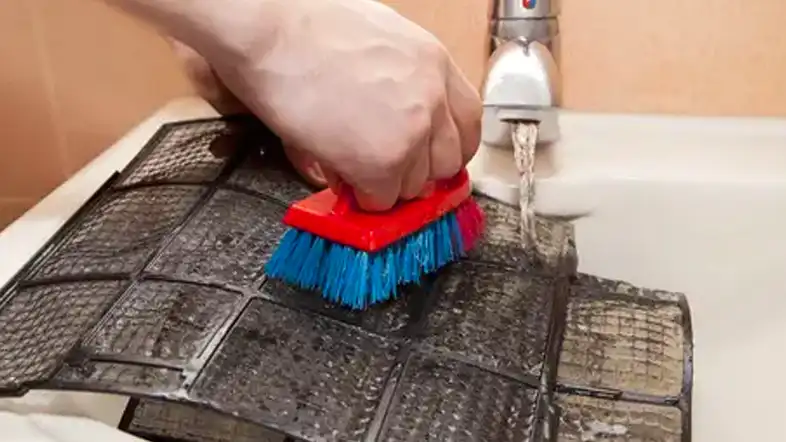
Here are the steps telling you how to clean HEPA filter in the right way. Let’s dive in.
Step 1: Gather Your Supplies
Before you begin, gather the following supplies:
- Soft brush or vacuum cleaner with a brush attachment
- Mild dish soap or a specialized HEPA filter cleaning solution
- A clean, lint-free cloth or paper towels
- Access to a sink with running water
Step 2: Turn Off Your Device
Ensure that the device containing the HEPA filter is turned off and unplugged. This prevents the circulation of particles during the cleaning process.
Step 3: Locate and Remove the HEPA Filter
Identify the HEPA filter in your device. It’s typically found in air purifiers, HVAC systems, or vacuum cleaners. Carefully remove the filter from its housing and place it on a clean surface.
Step 4: Brush Away Loose Debris
Using a soft brush or a vacuum cleaner with a brush attachment, gently remove any loose debris from the surface of the HEPA filter. Be delicate to avoid damaging the delicate filter fibers.
Step 5: Prepare a Cleaning Solution
Fill a sink with lukewarm water and add a few drops of mild dish soap or the specialized HEPA filter cleaning solution. This will be used to clean the filter effectively.
Step 6: Soak the HEPA Filter
Submerge the HEPA filter in the soapy water. Allow it to soak for approximately 10-15 minutes. This helps to loosen and dissolve trapped particles.
Step 7: Rinse Thoroughly
After soaking, rinse the HEPA filter under running water until the water runs clear. Ensure that all soap residue is completely washed away.
Step 8: Pat Dry
Carefully pat the filter dry with a clean, lint-free cloth or paper towels. Avoid squeezing or wringing the filter, as this could damage it.
Step 9: Allow to Air Dry
Leave the HEPA filter to air dry completely. This may take several hours, so exercise patience and ensure it’s completely dry before reinstalling it.
Step 10: Reinstall the Filter
Once the filter is fully dry, carefully reinsert it into your air purifier, HVAC system, or vacuum cleaner. Ensure it’s securely in place.
Step 11: Turn On Your Device
Finally, turn your device back on, and you’ll be able to enjoy improved air quality provided by your freshly cleaned HEPA filter.
It’s important to note that the frequency of cleaning may vary based on factors such as the level of air pollution in your environment and the manufacturer’s recommendations. Refer to your device’s user manual for specific guidance on how often to clean the HEPA filter. Regular cleaning is essential to maintain optimal air quality and prolong the filter’s lifespan.
How to Clean Non Washable Hepa Filter
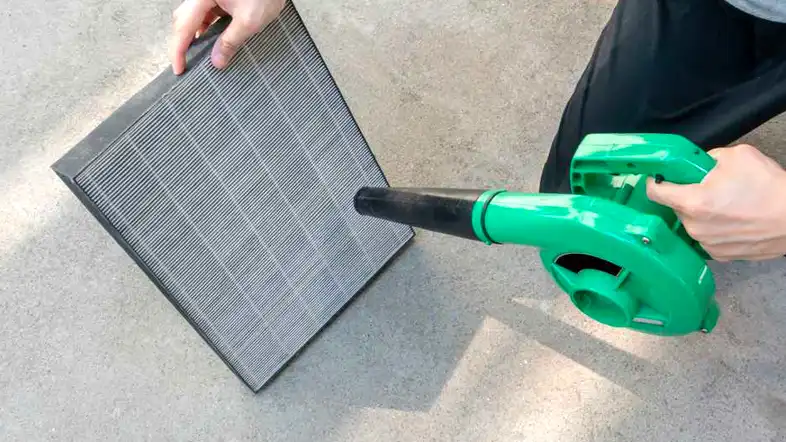
Cleaning a non-washable HEPA (High Efficiency Particulate Air) filter requires a different approach compared to washable filters. Since non-washable filters are not designed to withstand contact with water, you must take extra care when maintaining them. Here’s a step-by-step guide on how to clean a non-washable HEPA filter:
Step 1: Turn Off and Unplug the Device Before you begin, ensure that the device containing the non-washable HEPA filter is turned off and unplugged. This prevents the circulation of particles during the cleaning process.
Step 2: Remove the HEPA Filter Identify the HEPA filter within your device, whether it’s in an air purifier, HVAC system, or vacuum cleaner. Carefully remove the filter from its housing and place it on a clean surface.
Step 3: Use Compressed Air To clean a non-washable HEPA filter, you’ll need compressed air. You can obtain compressed air in a canister from most electronics or office supply stores. Hold the filter away from your face and direct short bursts of compressed air at the filter, blowing from the clean side to the dirty side. This will dislodge and remove the trapped particles from the filter.
Step 4: Repeat as Needed Continue using compressed air on different sections of the filter until no more particles come out. Be thorough but gentle to avoid damaging the delicate filter fibers.
Step 5: Check for Damage Inspect the HEPA filter for any signs of damage or wear. If you notice tears, holes, or other defects, it’s advisable to replace the filter rather than attempting to clean it further.
Step 6: Reinstall the Filter Once you are satisfied with the cleaning and the filter appears to be in good condition, carefully reinsert it into your device’s housing. Ensure it’s securely in place.
Step 7: Turn On Your Device Finally, turn your device back on, and you can once again enjoy improved air quality provided by your freshly cleaned non-washable HEPA filter.
It’s essential to note that non-washable HEPA filters have a limited lifespan. Over time, despite cleaning, they may become less effective at trapping particles. Therefore, if you notice a significant decline in air quality or the filter appears severely clogged, it’s a sign that it’s time to replace the filter with a new one.
Always refer to the manufacturer’s recommendations for the specific replacement intervals for your device’s filter. Regular maintenance and timely replacements are essential to ensure optimal air quality and the efficient operation of your device.
How Often Should You Clean Your HEPA Filter?
The frequency of cleaning your HEPA filter depends on several factors, including the level of air pollution in your environment and the manufacturer’s recommendations. As a general guideline:
- For air purifiers: Clean the filter every 2-3 months.
- For HVAC systems: Check the filter every 1-2 months and clean as needed.
- For vacuum cleaners: Clean the filter after every 3-4 uses.
How Do I Know if My Hepa Filter is Washable
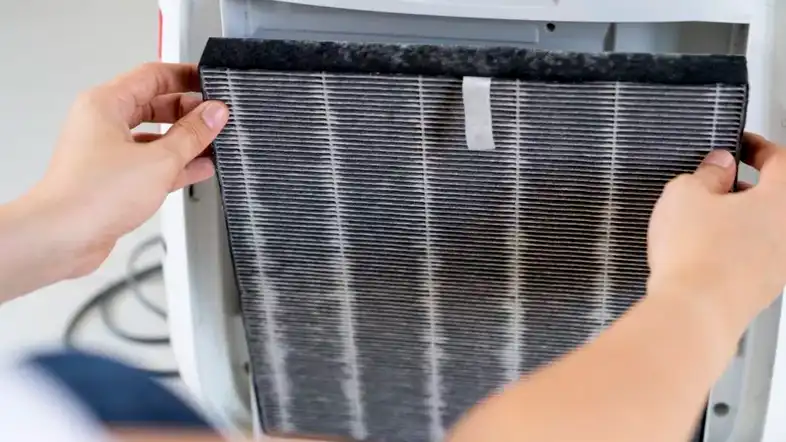
Determining whether your HEPA filter is washable or non-washable is essential to ensure proper maintenance. Here’s how you can identify if your HEPA filter is washable:
1. Check the User Manual:
The user manual that came with your device (air purifier, vacuum cleaner, HVAC system, etc.) is the most reliable source of information regarding your HEPA filter’s maintenance. Look for a section in the manual that describes cleaning and maintenance instructions for the filter.
If your filter is washable, the manual will explicitly state that it can be cleaned with water and provide detailed cleaning instructions.
2. Manufacturer’s Labeling:
Examine the filter itself for any labels or markings. Manufacturers often label their filters as “washable” or “non-washable” to provide users with clear guidance.
Look for any symbols or icons that indicate cleaning methods. A water droplet symbol may signify that the filter is washable, while a “do not wash” symbol would indicate that it’s non-washable.
3. Online Resources:
If you no longer have the user manual or the filter isn’t clearly labeled, you can visit the manufacturer’s website. Many manufacturers provide product information and user manuals online. Search for your product model and review the available documentation to determine the filter’s washability.
4. Contact the Manufacturer or Customer Support:
If you’re unable to find information online or through product labeling, consider reaching out to the manufacturer’s customer support. They can provide specific details about your filter’s washability and any recommended cleaning methods.
5. Visual Inspection:
In some cases, you may be able to visually inspect the filter. If the filter material appears to be paper-like, cardboard-framed or has a fragile texture, it’s likely non-washable. Conversely, if the filter material is made of a washable material like foam or a synthetic fabric, it may be washable.
6. Common Types:
As a general guideline, HEPA filters in air purifiers are often non-washable and need replacement when dirty.
On the other hand, HEPA filters in some vacuum cleaners or certain HVAC systems are designed to be washable.
Always exercise caution and follow the manufacturer’s recommendations for filter maintenance. Using the incorrect cleaning method on a non-washable filter can damage its effectiveness. Conversely, failing to clean a washable filter as instructed can lead to reduced performance.
Proper identification of your HEPA filter’s washability is crucial for maintaining good air quality and the longevity of your device.
In Conclusion
Maintaining a clean HEPA filter is essential for ensuring optimal air quality in your living space. By following the steps outlined in this guide, you can extend the life of your HEPA filter and enjoy cleaner, healthier air. Remember to clean your filter regularly, and you’ll reap the benefits of improved indoor air quality for years to come.
If you want to read more information how to clean HEPA filter, please feel free to contact us at any time, and don’t be hesitate to contact us if you are interested in our HEPA filters.

